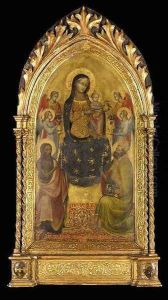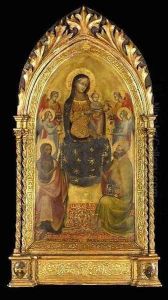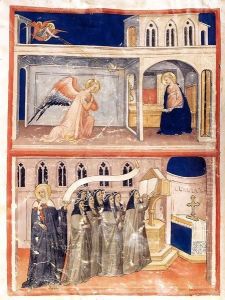Lippo D`Andrea Paintings
Lippo D'Andrea, born in 1377, was an Italian painter active during the late Gothic and early Renaissance periods. While not as widely recognized as some of his contemporaries, Lippo made significant contributions to the art world of Florence, the city where he spent most of his life and career. He is often associated with the International Gothic style, characterized by elegant and intricate details, vibrant colors, and a focus on ornamental beauty. However, his work also shows early signs of the emerging Renaissance ideals, blending traditional Gothic elements with a new interest in naturalism and the human figure.
Lippo D'Andrea's career spanned over seven decades, during which he worked on various commissions for churches and private patrons. Despite the lack of extensive personal records, it is known that he was highly regarded by his peers and clients. One of his most notable works is the altarpiece for the Church of Santo Spirito in Florence, which showcases his ability to create detailed, devout religious scenes combined with a rich, decorative style.
Throughout his life, Lippo's artwork reflected the transitionary period of European art, moving from the medieval focus on spiritual representation to a Renaissance interest in the natural world and human emotion. His contributions, though perhaps overshadowed by the giants of the Renaissance who followed him, remain an important part of the artistic evolution of the time. Lippo D'Andrea died in 1452, leaving behind a legacy that, while not as celebrated as that of his contemporaries, is a testament to the diverse and dynamic nature of early Italian Renaissance art.




